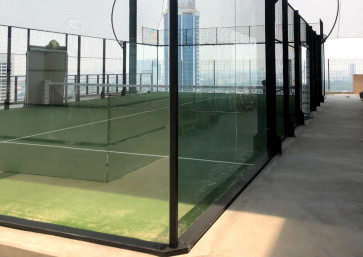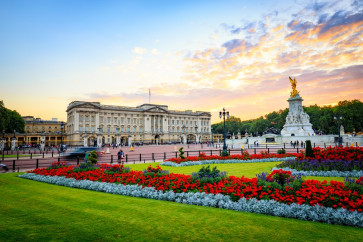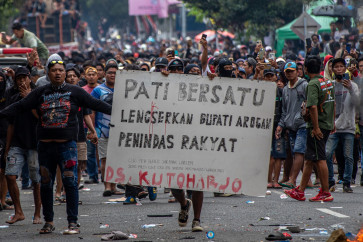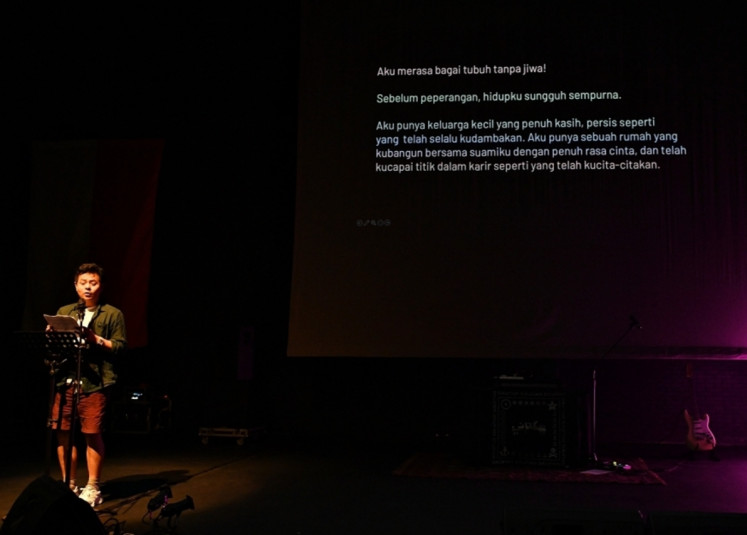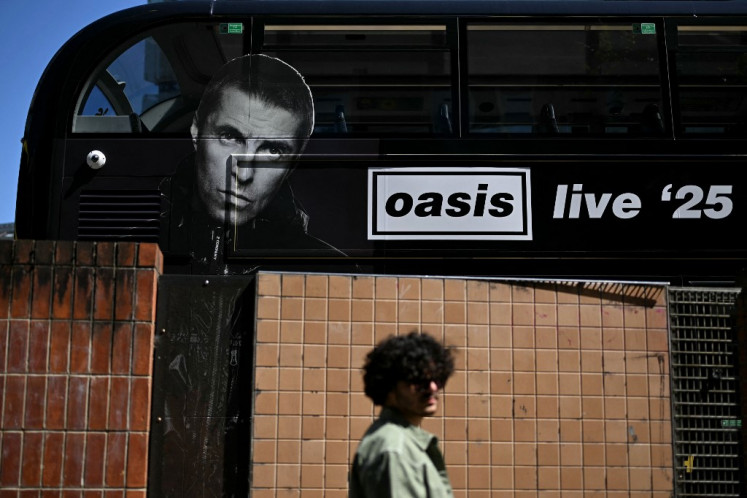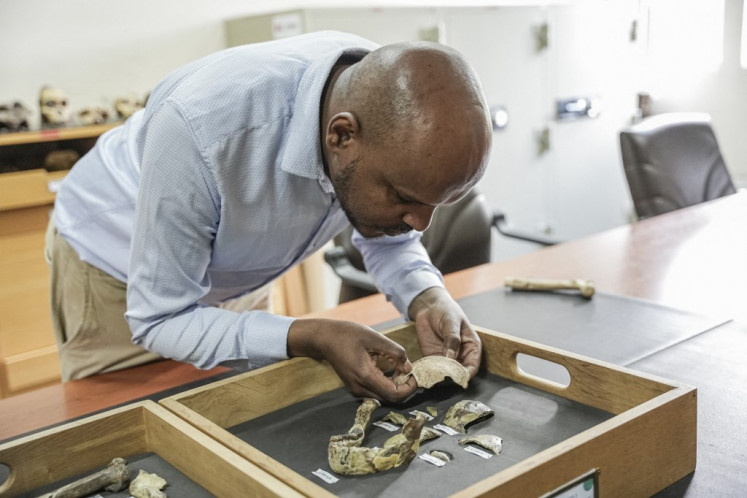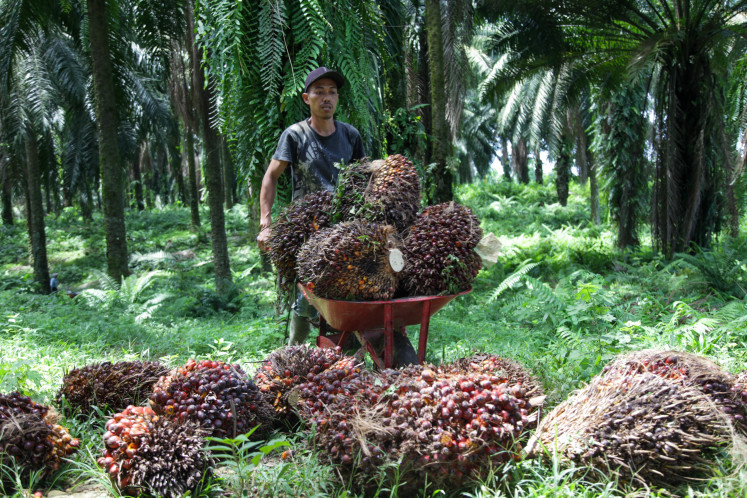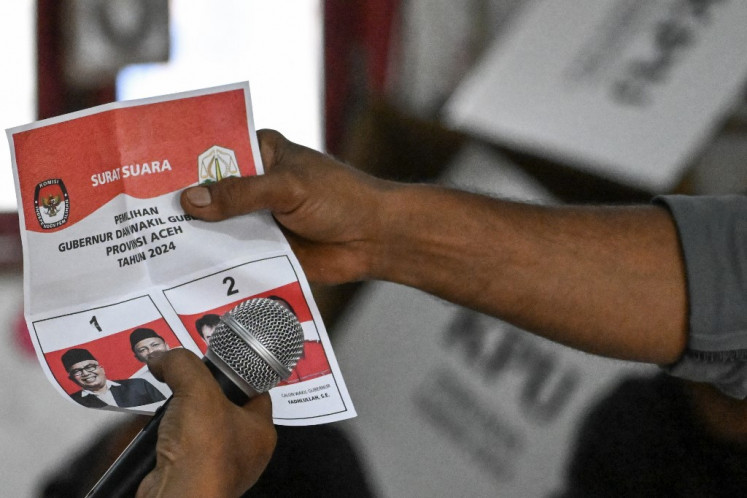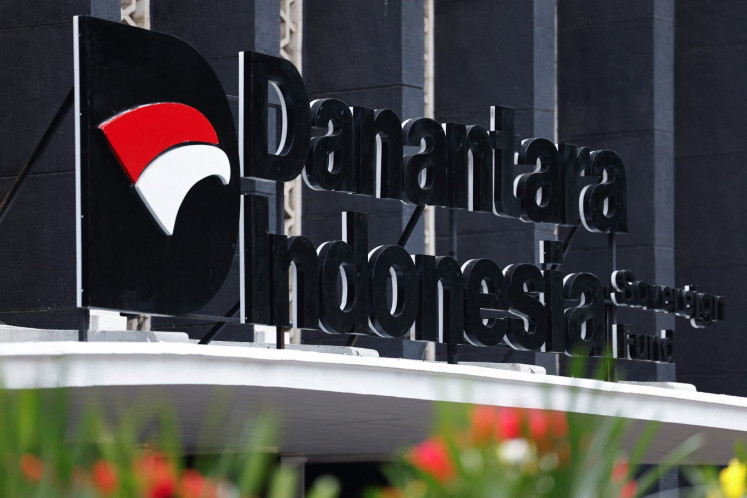Popular Reads
Top Results
Can't find what you're looking for?
View all search resultsPopular Reads
Top Results
Can't find what you're looking for?
View all search resultsHeadliners: Photo exhibit showcases 35-year journey
From the paper’s origins in the 1980s to the tumultuous 1990s, the shifting 2000s and the extraordinary 2010s, the “Headliners Photo Exhibition” tells both the history of The Jakarta Post and Indonesia at the same time.
Change text size
Gift Premium Articles
to Anyone
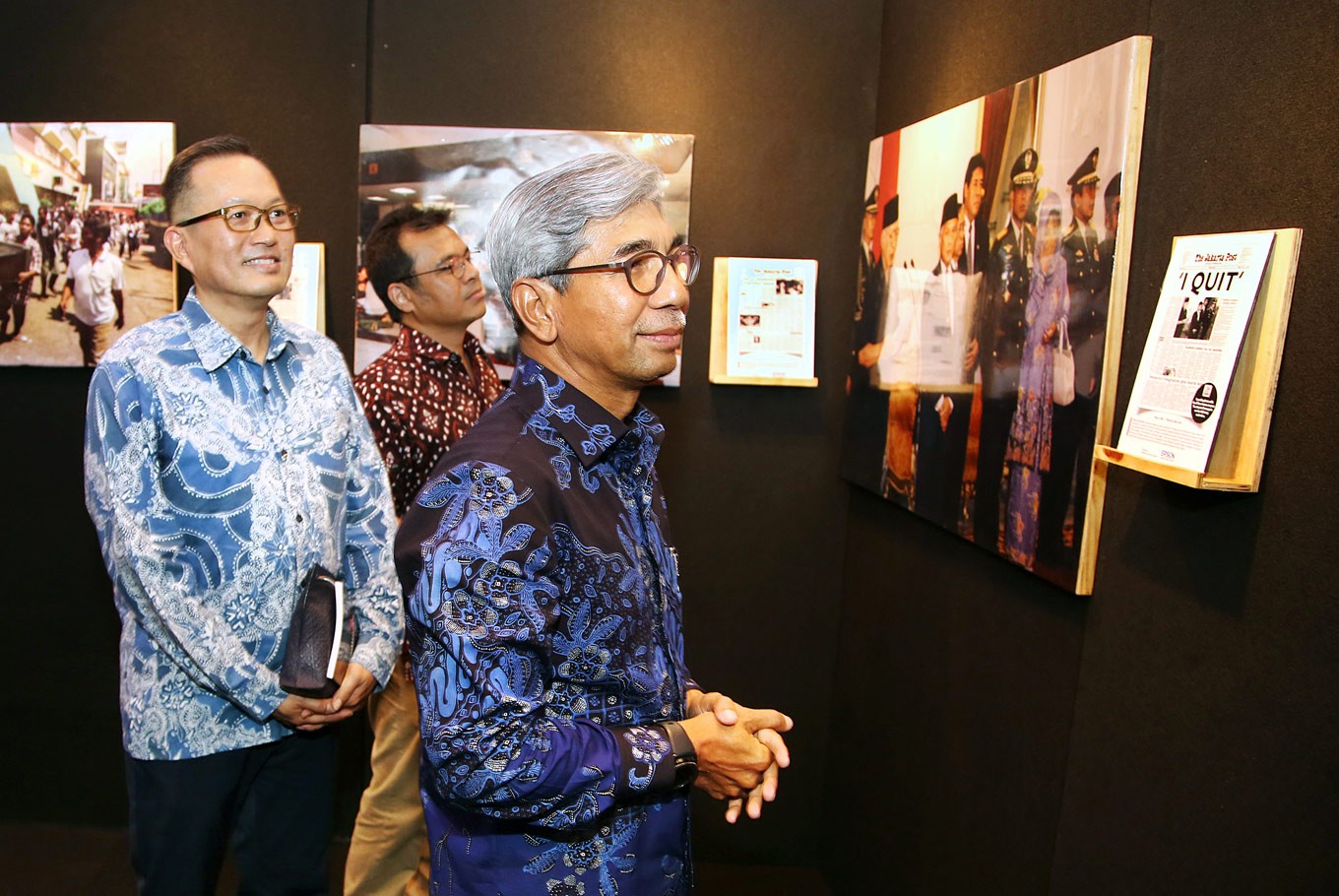 Thirty-Five years on: Deputy Foreign Minister Abdurrahman Mohammad Fachir (right) takes a tour of the Headliners Photo Exhibition at Lotte Shopping Avenue in Jakarta on Wednesday. He was accompanied by The Jakarta Post CEO Judistira Wanandi (left) and chief editor Nezar Patria. The five-day exhibition, which is being held to mark the English language publication’s 35th anniversary, will run until Sunday. (JP/P.J. Leo)
Thirty-Five years on: Deputy Foreign Minister Abdurrahman Mohammad Fachir (right) takes a tour of the Headliners Photo Exhibition at Lotte Shopping Avenue in Jakarta on Wednesday. He was accompanied by The Jakarta Post CEO Judistira Wanandi (left) and chief editor Nezar Patria. The five-day exhibition, which is being held to mark the English language publication’s 35th anniversary, will run until Sunday. (JP/P.J. Leo)
S
ituated in the lobby of Lotte Shopping Avenue in Kuningan, South Jakarta, from April 25 to 29 are several pieces of history narrating the visual ride of Indonesia’s longest running English newspaper, The Jakarta Post.
To mark the paper’s 35th anniversary this year, the Post’s photography team assembled an exhibition featuring the best 100 photographs ever featured, taken and published by the paper’s photography team throughout the years.
From the paper’s origins in the 1980s to the tumultuous 1990s, the shifting 2000s and the extraordinary 2010s, the “Headliners Photo Exhibition” tells both the history of The Jakarta Post and Indonesia at the same time.
“What we can see here is the chronology of both the paper and Indonesian history,” said the Post’s former chief editor Endy M. Bayuni.
“These photographs are landmarks of journalistic photography, as they are all able to tell the story as well as the articles that come with them. We have our photographers to thank for sustaining this quality.”
The exhibition showcases photographs that have made the front page, and all of them offer both small and grand visions of the goings-on in Indonesia.
“Journalism is usually the first sketch of history,” added current Post chief editor Nezar Patria. “Whatever is recorded on camera immediately becomes history.”
Snapshots taken during the Soeharto dictatorship of either him or the events that unfolded under his leadership offer a glimpse into the tension at the time. Images of the Reform Era saw new faces photographed in the political light.
The damage of the countless natural or man-made disasters that Indonesia has gone through are shown through the faces of the affected, or through the damage itself. Brute criminals such as Tommy Soeharto and crafty ones like Muhammad Nazaruddin reluctantly show their faces as they walked handcuffed into the line of camera fire.
For almost every major incident in the past 35 years, the Post was there to capture the moment.
Some of the more notable headline photographs include those that singularly feature prominent figures: Joko “Jokowi” Widodo captured winning the presidential election of 2014, the aftermath of graft investigator Novel Baswedan’s unfortunate acid attack in 2017 as well as a 2006 photo of Abdurrahman “Gus Dur” Wahid smiling widely, proclaimed in the headline as “the cleric of pluralism”.
“The Gus Dur photograph struck me the most because you’re able to see that he is a man of great respect and pluralist values, even just through his smile,” Deputy Foreign Minister Abdurrahman Mohammad Fachir commented during his visit to the exhibition.
Along with the exhibition, the paper has launched its own photography archive website thejakartapostimages.com, where a comprehensive digitized collection of the paper’s best images are available to view and use personally, socially and commercially.
“The archives serve a great purpose for us in the diplomatic community as we are able to easily access the Post’s collection of photographs relating to diplomacy, both for official and leisurely uses,” Fachir said.
Highlights of the event on Friday will be a discussion and book signing of the Guardians of Tradition photo book by the Post’s senior photographer P.J. Leo.

